The mode line is a feature of some text editors and source control systems. It provides useful summary or contextual information for an associated buffer or file.
Overview
The mode line is a feature of some text editors and source control systems.
It provides useful summary or contextual information for an associated buffer or file.
Vim modeline
In Vim, the modeline is an annotation at the beginning or end of a text document to configure the editor for that document
Emacs modeline
In Emacs, the modeline is shown in the window, including its name and current modes. It is located at the bottom of every Emacs Window aside from MiniBuffer windows.
Here is a screenshot that shows a windows with it's mode line (the gray bar at the bottom):

For complete information on the contents of mode lines, see mode line in the EmacsManual. The information in a mode line usually includes the following:
- Whether or not the buffer has been modified:
**– modified since last save--– not modified since last save%*– read-only, but modified%%– read-only, not modified
Buffer name.
The name of one or more MajorModes or MinorModes of the buffer
Line number of the TextCursor (and Point), and perhaps the column number.
Position in buffer:
Top– the beginning of the buffer is shown in the windowBot– the end of the buffer is shown in the windowAll– all of the buffer is shown in the window- a percentage – percentage of the buffer above the top of the window.
Coding system of the buffer.
End-of-line translation.
Sources: ModeLine | Emacs Wiki